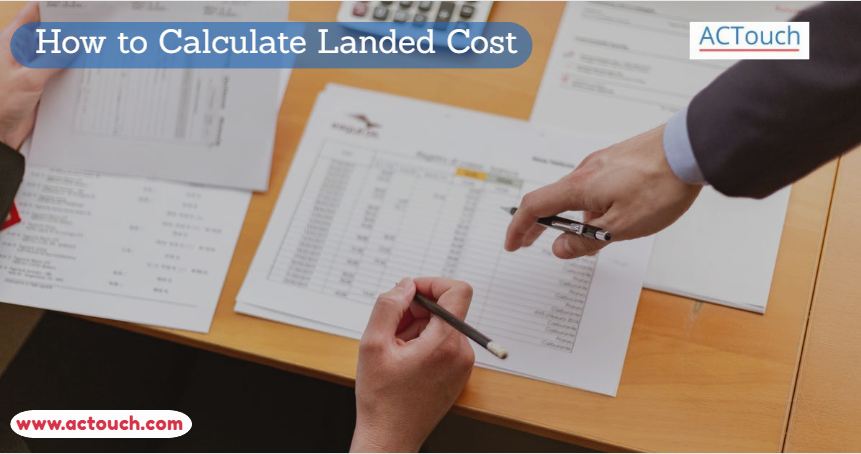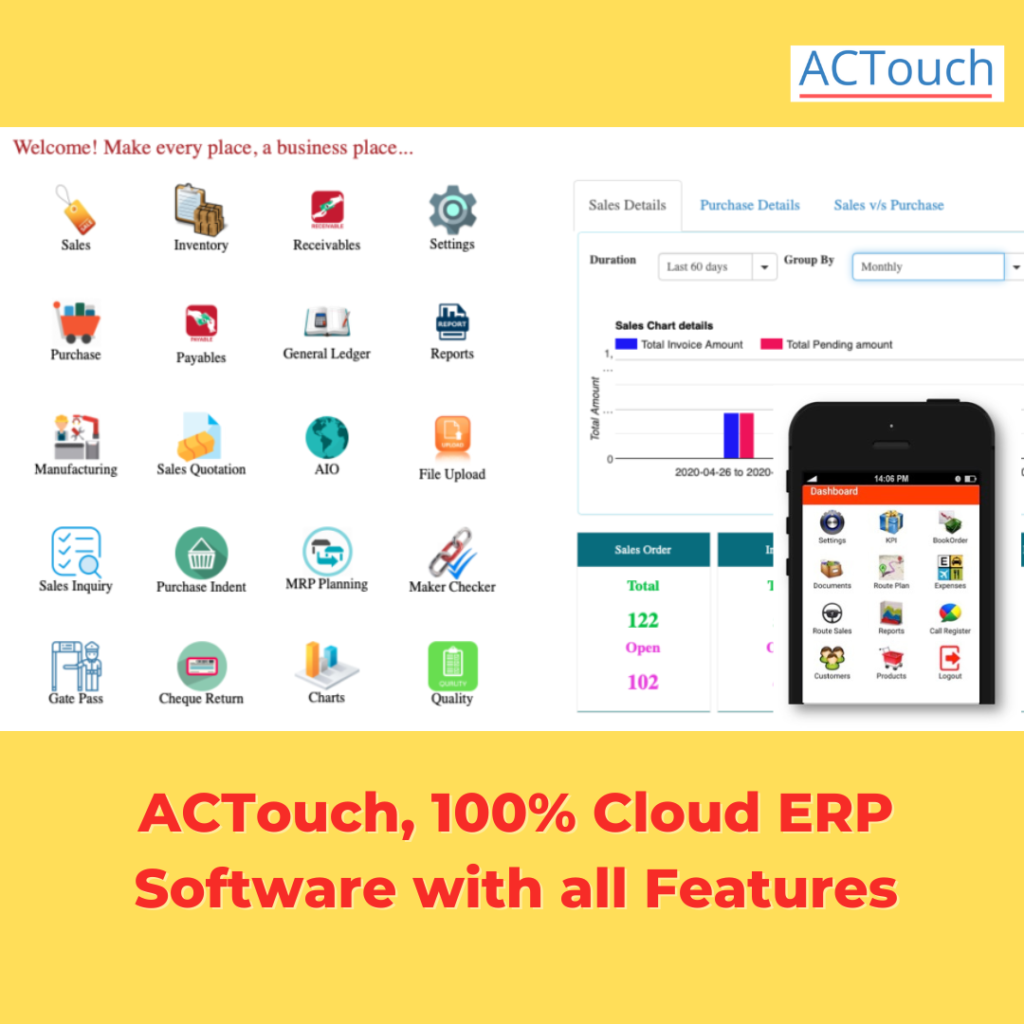
Product Landed Costs: 100% Best Guide to understand more.
What is landed cost? When we source the Products from a Overseas Supplier, it is essential for us to know the total cost of the product including Foreign exchange rates, Customs Duty and taxes paid etc. This helps us to value the product and decide on the selling price. Many businesses make loss by not focusing on these small and important factors.
There are multiple parties involved in this supply chain from Supplier to Customs to Local logistic agencies to Customer. Each one has different terms, currency of payments and cost factors. All these are added into the Import Product Landed Cost.
Few factors should be considered to arrive at the Landed costs of an Imported Items
- You need to receive a finalized Sales Quote and send your confirmed Sales Orders as confirmation for the Vendors to supply the materials. Now as part of this, you need to pay the money, 100% in advance. There are cases where Suppliers are OK to receive the money against the Bank Guarantees or Letter of credit etc. But many prefer to receive the money upfront as it avoids all the hassles.
The Purchase Order would contain the detail like
- Suppliers Details.
- Who is the Consignee?
- Port of Landing
- Port of Discharge
- Where the material would be delivered.
- Document Currency with payment terms and conditions
- Date of dispatch and the time duration
- Product details with Units of measurement and the Unit price. Any discount offered is also captured.
- Currency Exchange rates –The rate fluctuation can kill all your profit margins. So be careful here to fix the rates with Bank before agree to send the money.
- There are some more factors needs to be agreed with Supplier as these costs might be borne by you.
- Insurance cost from Supplier location to the Port of landing.
- Shipment charges/ Containers fees.
3. Once the Item is landed at Customs port (Airport or Shipyard), there are other cost factors to consider.
-
- Local customs duty / GST charges based on product’s HSN Codes.
- Need to know the Assessable value of product. Because based on this price, the Customs decide the tax amount to pay. Please note this is paid in the LOCAL CURRENCY.
- Local warehouse charges, if the items are not cleared within the specific days. You need to store the materials till the customs clearance happens.
4. Once the items are cleared then we need to consider the costs to arrive the items at Factory door
-
-
- Local logistic charges
- Packing and forwarding charges, if any.
-
- In case of the items are to be released based on Banks Letter of Credit or Bank Guarantees then you need to follow these rules and pay for these services.
- When we settle the Supplier payments, we need to know the Foreign Exchange values at that time of payment and this could lead to “Exchange Gain or Loss” due to difference in the Forex price. This is a notional gain or loss, but an important one.
Now a day, many Courier companies do these end to end services including Customs clearance too. So you pay them a sum and they will get the product cleared from customs, pay the taxes and deliver the items at your Doorstep.
Landed Cost Formula with an example
We are importing a Machine form Dubai, UAE country to Chennai. India. Now the port of landing is Mumbai, where the Customs would clear the process and release the Machine. So lets put the details one by one.
Below is the Landed Cost formula with details.
- Supplier quote shows
- Product name and HSN codes
- Cost of the Product is – USD 15,000
- Sea Insurance – $ 250.00
- Sea Freight – $350.00
- So total product cost for Assessable value is = $15,600.00
- Port of Discharge – Dubai, UAE.
- Port of landing – Mumbai. India.
- Exchange rate between USD and INR = Rs 70 per dollar.
- Now you have paid the 100% advance money to supplier and send the materials.
- Now the material is landed at Mumbai Customs.
- We have to get an assessable value of the item = $15,600 (This changes depending on how the items are treated and also includes Insurance and Freight)
- Exchange rate is Rs 70 per USD. So the assessable value in INR = Rs 10,92,000.00
- GST 18% is calculated on this INR amount = Rs 196,560.00
- Now local logistics charges
- Local logistic charges from Mumbai to Chennai – Rs 3500.00
- Local insurance and others – Rs 1500.00
Now the total landed cost (In local currency) of Machine is (Landed Cost of a Machine based on above values)
Product cost + Sea Insurance + Sea Freight + Customs / Taxes + Local logistics + Local Insurance = Rs 10,50,000 + 17500 + 24,500 + 196,560 + 3500 + 1500 = Rs 12,93,560.00
So total landed Cost = Rs 12,93,560.00
Now the above calculation looks simple when you are doing only one Import order and you can do the calculations manually. What happens the business involved that needs to be doing this again and again?
So ACTouch Cloud ERP created an ERP Software with a facility to find the Landed Cost and this would help to know the actual cost of the product. We have done the ERP in such a way that it can also handle the payment to multiple vendors at a time.
Find your Product Landing cost. Use our Free Calculator now
If you look at the above scenarios, we have to pay for multiple parties against a Single Goods Receipt note, but different amounts.
- Dubai Supplier
- Freight and Insurance company (Sea freights)
- Customs with 18% GST
- Local Logistic party
- Local Insurance party.
FAQ’s on Landed Costs
1. What is Landed Cost?
What is Landed cost refers to the total cost incurred by a business for acquiring, importing, and receiving a product into inventory or for sale. It encompasses not only the purchase price of the product but also all additional expenses associated with bringing the product to its final destination, including transportation, customs duties, taxes, handling fees, and other relevant costs.
2. Why is Landed Cost Important for Businesses?
Landed cost is essential for businesses to accurately calculate the total expenses associated with procuring goods. It helps in determining the true cost of products, evaluating profitability, setting appropriate pricing strategies, and making informed decisions about sourcing, shipping, and international trade.
3. How Do You Calculate Landed Cost?
Landed cost is calculated by adding up various costs associated with procuring and transporting a product. The formula typically includes:
Landed Cost = Purchase Price + Freight Costs + Customs Duties + Taxes + Handling Fees + Other Miscellaneous Costs
Each component must be carefully calculated based on the specific circumstances of the transaction.
4. What are Some Common Components of Landed Cost?
Common components of landed cost include:
- Purchase price of the product
- Freight and shipping charges
- Customs duties and tariffs
- Import taxes and fees
- Insurance costs
- Handling and unloading fees
- Warehousing and storage costs
- Currency conversion fees
5. How Can Landed Cost Impact Pricing Strategies?
Landed cost directly influences the pricing of products. If a business underestimates its landed costs, it might set prices too low, leading to reduced profitability. Conversely, overestimating landed costs may result in higher prices that discourage customers. Accurate landed cost calculations ensure that businesses can establish competitive yet profitable pricing strategies.
6. What are the Challenges in Managing Landed Costs?
Challenges in managing landed costs include:
- Dealing with fluctuating exchange rates affecting currency conversion.
- Navigating complex international trade regulations.
- Accurately estimating variable expenses like customs duties and taxes.
- Tracking and allocating costs to specific products accurately.
- Integrating landed cost calculations into existing inventory and accounting systems.
7. How Can Software Help Manage Landing Costs?
Specialized software, often integrated with inventory and accounting systems, can assist in managing product landing costs by automating calculations, tracking expenses, and providing accurate cost allocation. This streamlines processes, enhances accuracy, and helps businesses make better-informed decisions.
How ACTouch Cloud ERP can help to resolve Laned Costs problems and enable 100% tracking
8. How Does Landing Cost Impact Profit Margins?
Landing cost plays a crucial role in determining actual profit margins. Neglecting certain costs can lead to lower-than-expected margins, potentially affecting the financial health of a business. Accurate landed cost calculations ensure that profit margins are correctly assessed and managed.
9. What Strategies Can Businesses Use to Minimize Landed Costs?
Businesses can minimize landed costs by:
- Optimizing supply chain logistics to reduce shipping expenses.
- Utilizing free trade agreements or preferential tariffs to reduce duties.
- Consolidating shipments to benefit from bulk discounts.
- Efficiently managing inventory to avoid storage and holding costs.
- Accurately forecasting demand to avoid overstocking and obsolescence.
10. How Does Landed Cost Impact Global Sourcing Decisions?
Landed cost has a direct impact on global sourcing decisions. By accurately calculating the total cost of procuring goods from different regions, businesses can make informed decisions about the most cost-effective sourcing options. This includes considering not only the purchase price but also all associated expenses when comparing suppliers from different countries.
To know more Email: sales@actouch.com
How the UAE Customers can handle the Product landing costs as these values are shown in VAT Returns.
Migrate to 100% Cloud ERP Software Now and enjoy the FREEDOM | ||
 | Talk to us to know more about ACTouch Cloud ERP Software NOW  |